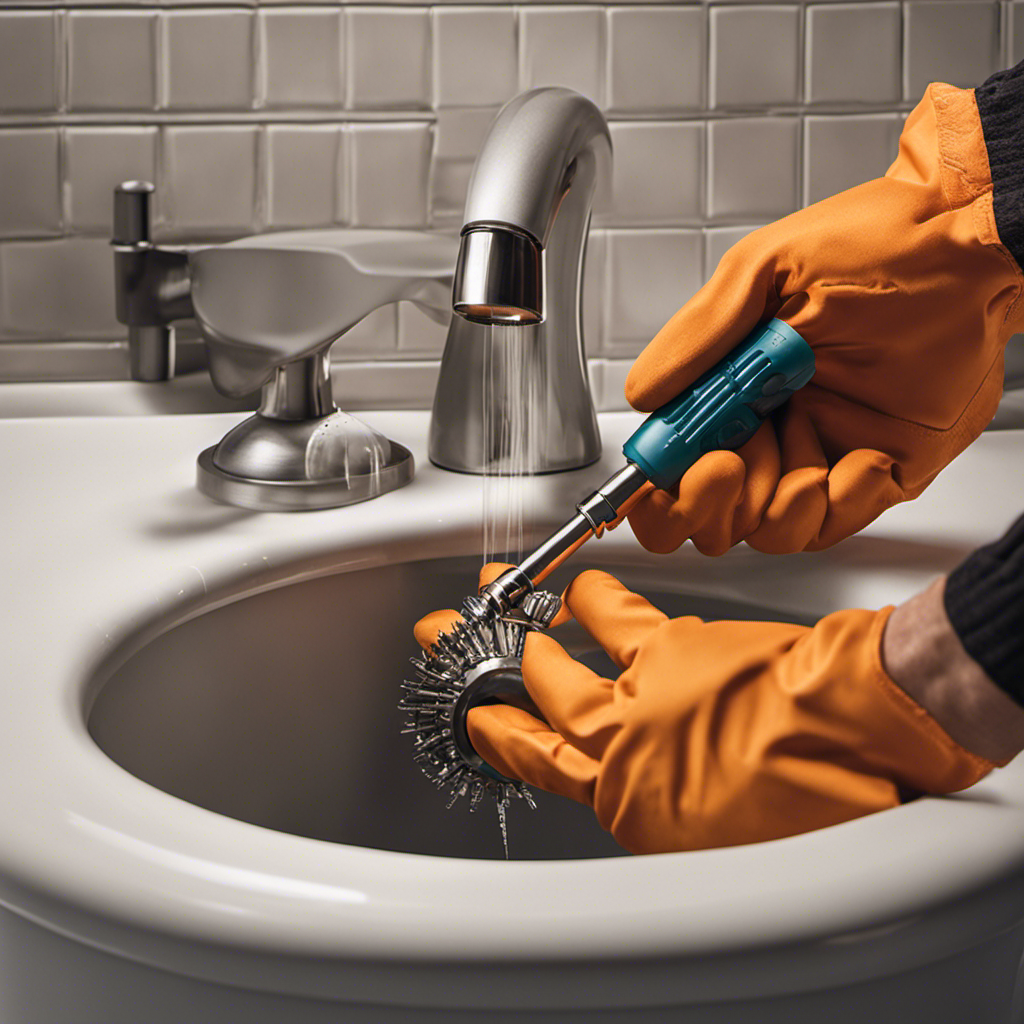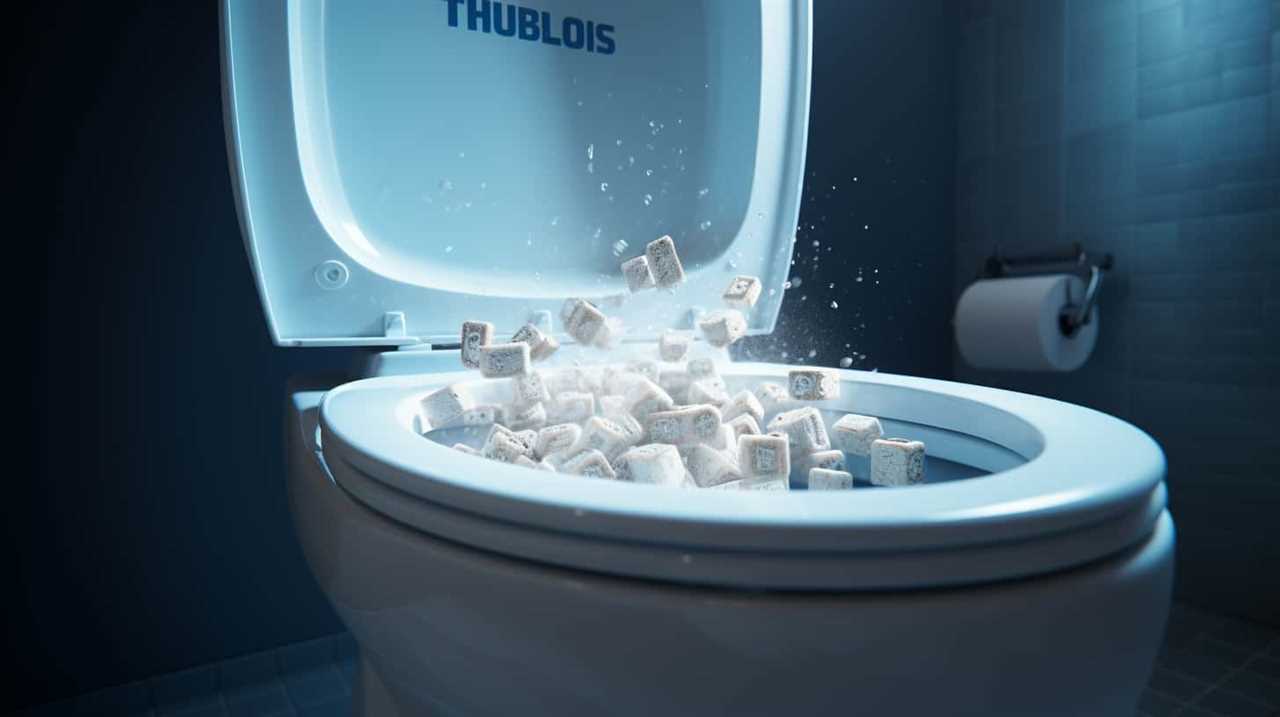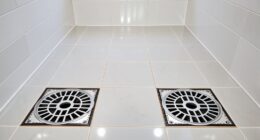As a homeowner, it can be incredibly frustrating when water starts backing up in your bathtub. It’s like a wrench thrown into the gears of your daily routine.
But fear not, for I have the answers you seek! In this article, we will explore the common causes of bathtub water backing up, the signs to look out for, and DIY solutions to unclog the drain.
So sit back, relax, and let’s dive into the world of clogged bathtub drains together.
Key Takeaways
- Clogged drains are a common cause of water backing up in the bathtub, often due to hair, soap scum, and debris buildup.
- DIY solutions such as using a mixture of baking soda and vinegar can be effective in unclogging a bathtub drain.
- If DIY methods are not successful, it is advisable to call a professional plumber who has the expertise and specialized tools to address complex drain problems.
- To prevent bathtub water backing up, it is important to practice preventive measures such as using a hair strainer, avoiding pouring grease or oil down the drain, and regularly maintaining the drain.
Common Causes of Bathtub Water Backing Up
One common cause of water backing up in the bathtub is a clogged drain. Over time, hair, soap scum, and other debris can build up in the drain, impeding the flow of water.
To prevent this issue, regular bathtub drain maintenance is essential. This includes removing visible debris from the drain cover and using a drain strainer to catch hair and other particles before they go down the drain. Additionally, it is crucial to avoid pouring grease or oil down the drain, as they can solidify and cause blockages.
If water is already backing up in the bathtub, bathtub drain repair may be necessary. This can involve using a plunger or a drain snake to remove the clog or calling a professional plumber if the problem persists.
Signs and Symptoms of a Clogged Drain
If you notice a slow drain, it could be a sign that your pipes are clogged. It’s important to be aware of the warning signs and potential dangers of a clogged drain to avoid costly repairs and potential health hazards. Here are some signs and symptoms to watch out for:
- Water backing up in the bathtub or sink
- Foul odors coming from the drain
- Gurgling noises when using plumbing fixtures
- Multiple drains clogging at the same time
- Slow draining or standing water in the sink or bathtub
These warning signs indicate that there is a blockage in your plumbing system, which can lead to water damage, mold growth, and sewage backup. Ignoring these signs can result in costly repairs and pose potential health risks to you and your family.
If you experience any of these symptoms, it’s best to address the issue promptly to prevent further damage and ensure the safety of your home.
DIY Solutions to Unclog a Bathtub Drain
When dealing with a clogged bathtub drain, you can try using a mixture of baking soda and vinegar as a DIY solution. This natural remedy is not only effective but also safe for the environment.
To begin, remove any standing water from the bathtub. Then, pour half a cup of baking soda down the drain, followed by one cup of vinegar. The mixture will create a fizzy reaction that helps break down the clog.
Let it sit for about 30 minutes before flushing the drain with hot water. This method is great for routine bathtub drain maintenance and can help prevent future clogs.
Remember to use natural remedies for unclogging drains whenever possible to avoid the use of harsh chemicals.
When to Call a Professional Plumber for Bathtub Drain Issues
To ensure the proper resolution of your bathtub drain issues, it’s important to consider calling a professional plumber. While DIY solutions can be tempting, there are certain situations where it is best to leave it to the experts. Here are five reasons why hiring a professional plumber for bathtub drain issues is worth considering:
- Experience: Plumbers have the knowledge and expertise to accurately diagnose and fix complex drain problems.
- Tools and Equipment: They have specialized tools and equipment that are necessary for effective drain cleaning.
- Time and Efficiency: Professionals can quickly identify the root cause of the issue and resolve it efficiently, saving you time and frustration.
- Safety: Plumbing work can be hazardous, especially when dealing with chemicals or electrical components. Plumbers are trained to handle these situations safely.
- Cost: While hiring a professional plumber may come with a price tag, it can save you money in the long run by avoiding costly mistakes and further damage to your plumbing system.
By understanding when to DIY versus hiring a professional plumber and considering the cost of hiring a professional, you can make an informed decision about the best course of action for your bathtub drain issues.
Now, let’s explore some preventive measures to avoid bathtub water backing up.
Preventive Measures to Avoid Bathtub Water Backing Up
One way you can prevent your bathtub drain from clogging is by using a hair strainer in the drain. Hair is one of the main causes of clogs in bathtub drains. By using a hair strainer, you can catch and remove any hair before it goes down the drain, preventing clogs from forming.
It is important to regularly clean the hair strainer to ensure it continues to effectively catch hair and debris.
Additionally, you can prevent clogs by being mindful of what goes down the drain. Avoid pouring grease, oil, or large food particles down the drain as they can easily cause blockages.
Regularly pouring hot water down the drain can also help to flush out any build-up and maintain the proper flow of water.
Conclusion
After exploring the common causes of bathtub water backing up and the signs and symptoms of a clogged drain, it is clear that taking preventive measures is crucial.
Did you know that according to a study conducted by the Environmental Protection Agency, an average American family can waste up to 10,000 gallons of water every year due to leaks and clogs?
By being proactive and regularly maintaining your bathtub drain, you can prevent water backing up and save both water and money.










